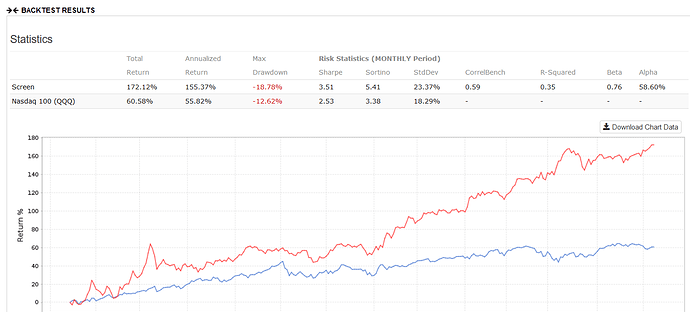[quote]
Chaim -
I have come up with an explanation for why small caps have massively underperformed large caps over the last ten years, but it’s not a great one because if it were true small caps should have underperformed large caps in the 2002 to 2008 period as well, and they didn’t. I still maintain that small caps are not as good a value as large caps; you disagree. I’m grateful to you for the charts of unprofitable companies too. Here’s my question for you: do you have an alternative explanation for why small caps have underperformed large caps over the last ten years?
- Yuval
[/quote]Yes. Not only do I have a theory, but back in 2012 I wrote that I was almost certain that it was going to happen. And my prediction came true. You won’t find me making lots of predictions like that. You also won’t find me saying too often that I am almost certain about stuff in the markets.
I written about my reasoning on this forum a few times.
Basically, there has been a pattern over numerous market cycles that large growth (and by extension the S&P 500) does better at the end of a long bull market. This is observation that has held out of sample for at least two market cycles. This was somewhat of a proof, albeit not a reason.
Furthermore, prices of high quality large cap stocks (such as Google) were trading at PE multiples similar to small caps. Fundamentally, that made no sense. Why should better businesses trade at the same PE as low quality stocks?
At the same time, small caps were almost all fully valued (or close to it). To illustrate, as a financial analyst, collecting value investment ideas from multiple great investors, I had kept a watchlist of stocks that were trading at 1/2 price. I had twenty or more stocks on this list at all times from 2007-2011. But by 2012 I was not finding any stocks trading at half price. This meant that the party was over for small value. As you yourself have observed in the past, small value stocks are not long term holdings. You buy them for the pop and then trade them. But there was no pop left. The juice had been squeezed.
From a behavioral standpoint, I understood that investors were once again fighting the last battle. They remembered vividly that large caps (such as AIG and banks) had failed spectacularly in the GFC. So they did not view large caps as safe. They also remembered the lessons from the dot com crash; to stay away from tech stocks. After all, Microsoft had not gone up in ten years. (What they didn’t realize was that Microsoft had been selling at highly inflated valuations in 2000, and it took ten years or so to grow into its valuations).
But I understood then that eventually the tide was going to turn. I didn’t know when. (Ultimately it took a couple more years for large growth to gather steam and it’s momentum has accelerated).
At this point, investors have again forgotten the hard earned lessons from the 1920’s, 1960’s, 1980’s Japan, and 1990’s; price ultimately matters. Stocks will revert to track earnings. So everyone “knows” that there is no point in owning small value stocks. Proof? The past ten years. FAANG and tech stocks are the place to be. The current attitude is: What is discounted cash flow? Is that something like the failed modern portfolio theory? Hasn’t the recent past dis-proven DCF?
It’s as Templeton said: “Bull markets are born on pessimism, grown on skepticism, mature on optimism, and die on euphoria” I’d guess that this is what he meant by euphoria. “Price? Why does price matter? Buy great companies!”
Right now I am not predicting small value outperformance (although it wouldn’t surprise me). But I would be surprised if small caps will not bounce back faster from the bottom of this bear market, whenever that bottom is going to be.
P.S. Small growth (SG) stocks are often fundamentally different than large growth (LG). A typical SG stock typically has no profits; just a dream. Why would anyone buy those? OTOH, large growth typically is dominated by stocks with an accepted business model and growing rapidly. Those stocks may be great businesses. So biggest argument against them is price. Prices often match or exceed all reasonable expectations for future cash earnings. When that happens risk is highest.
So, in summary, large caps are risky now mostly because of valuations (a reason) and because of the crash (a possible catalyst). Small caps are risky now because of the recession (a reason and a catalyst). In fact, small caps overall are more vulnerable than large caps. So I am still very conservatively positioned. But as usual I am not close to being certain about the near term, in fact, I am not certain about the next ten years either.


